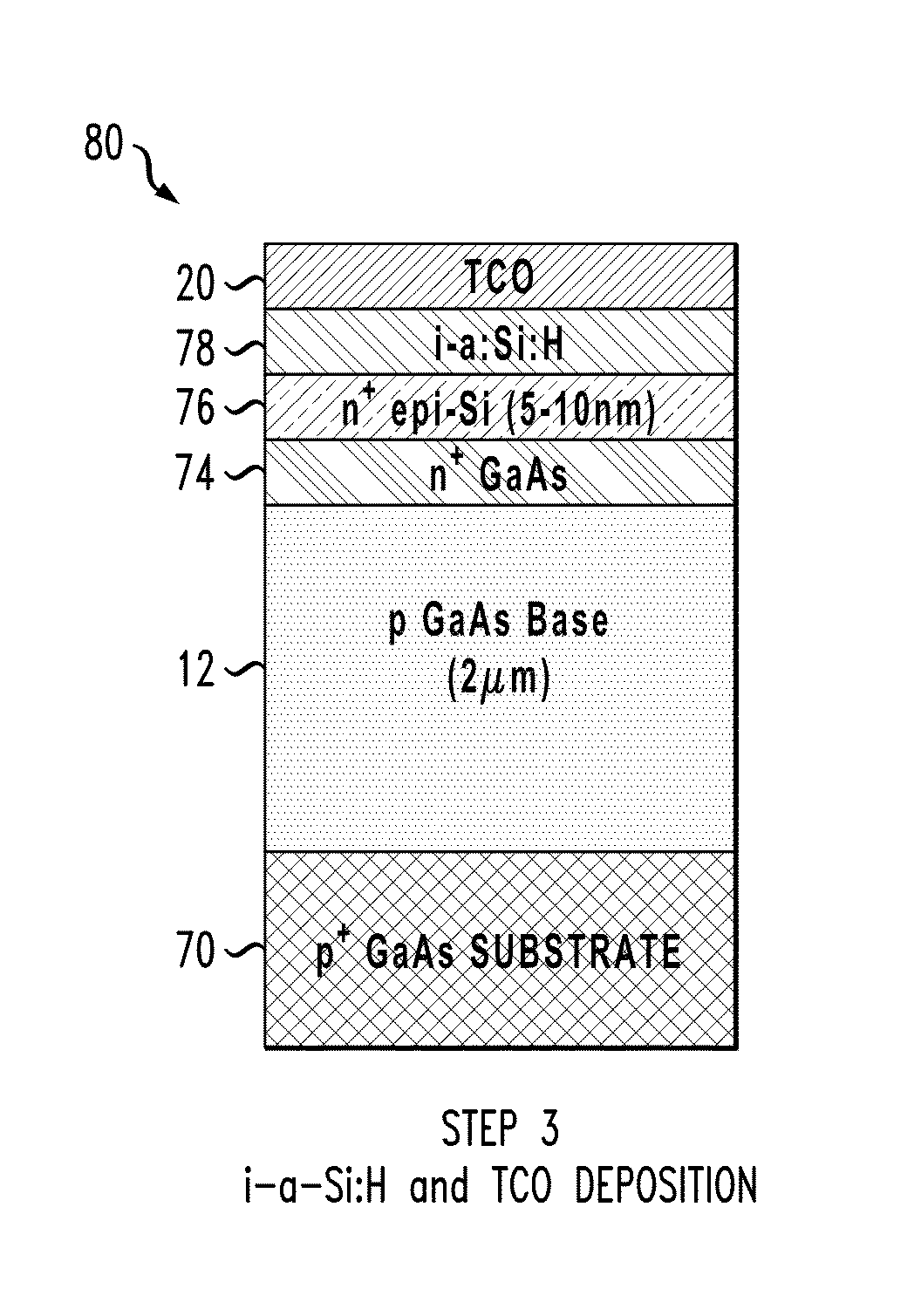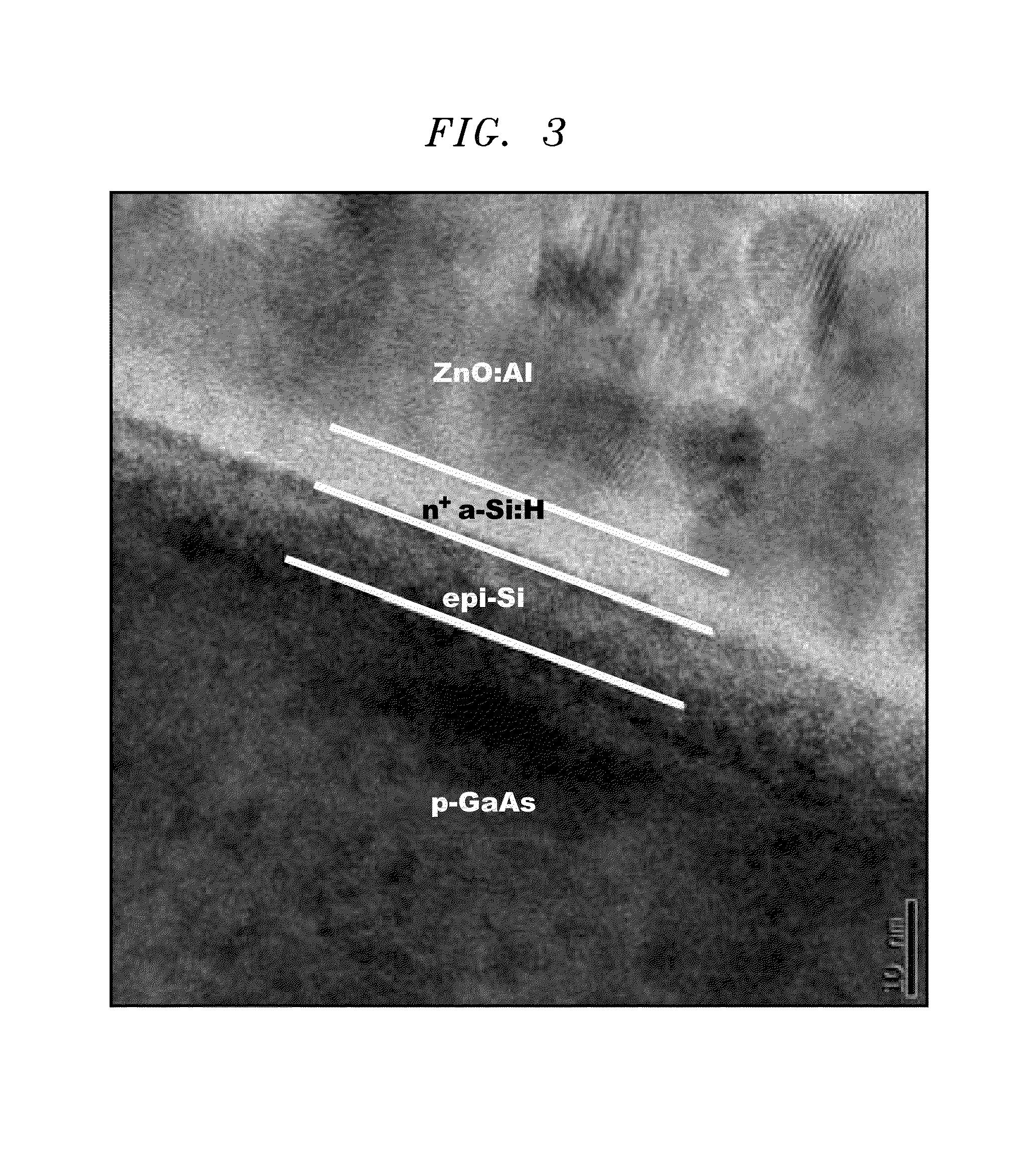III-V photovoltaic elements
a photovoltaic element and absorber material technology, applied in the field of physical sciences, can solve the problems of not providing a platform for manufacturing high-efficiency cells, reducing the efficiency of solar cells, and reducing the cost of solar cells for many terrestrial applications. achieve the effect of improving the efficiency of carrier collection and improving the performance of solar cells
- Summary
- Abstract
- Description
- Claims
- Application Information
AI Technical Summary
Benefits of technology
Problems solved by technology
Method used
Image
Examples
Embodiment Construction
[0022]Heterojunction III-V solar cell structures based on a-Si:H / III-V heterostructures offer a path for low-cost, high efficiency PV (photovoltaic) technology when implemented in conjunction with a layer transfer technique. The use of a-Si:H as an intrinsic layer (i-a:Si:H) can significantly improve the surface passivation of GaAs. US Pub. No. 2010 / 0307572 entitled “Heterojunction III-V Photovoltaic Cell Fabrication”, the disclosure of which is incorporated by reference herein, discloses techniques for forming single and double heterojunction III-V PV cells.
[0023]FIG. 4 shows a solar cell structure 10 that can be produced using techniques disclosed in US Pub. No. 2010 / 0307572. The structure 10 includes a base layer 12 comprising a doped III-V substrate that may be n-type or p-type. Doped amorphous silicon layers 18, 18′ are formed on intrinsic amorphous silicon layers 16 on the base layer 12. The amorphous silicon layers 18, 18′ may have doping types that are the same or opposite f...
PUM
 Login to View More
Login to View More Abstract
Description
Claims
Application Information
 Login to View More
Login to View More - R&D Engineer
- R&D Manager
- IP Professional
- Industry Leading Data Capabilities
- Powerful AI technology
- Patent DNA Extraction
Browse by: Latest US Patents, China's latest patents, Technical Efficacy Thesaurus, Application Domain, Technology Topic, Popular Technical Reports.
© 2024 PatSnap. All rights reserved.Legal|Privacy policy|Modern Slavery Act Transparency Statement|Sitemap|About US| Contact US: help@patsnap.com










